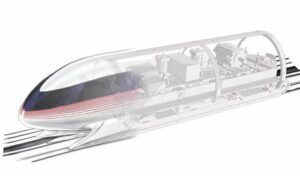Achieve greater efficiency and agility through a groundbreaking technology that has revolutionized supply chain optimization!
The supply chain is the backbone of any business, and its efficient management is crucial for ensuring seamless operations and customer satisfaction. In recent years, digital twins have emerged as a groundbreaking technology that has revolutionized supply chain optimization. A digital twin is a virtual representation of a physical object, process, or system, allowing real-time monitoring, analysis, and simulation of supply chain operations. This article explores the role of digital twins in supply chain optimization and highlights the benefits they offer to businesses seeking to achieve greater efficiency and agility.
Understanding Digital Twins in the Supply Chain
Digital twins in the context of the supply chain create a virtual replica of the entire supply chain network, encompassing suppliers, manufacturers, logistics providers, and distribution centers. By leveraging IoT sensors, real-time data is continuously collected from various points along the supply chain, enabling an accurate representation of the physical processes and assets. This digital representation allows businesses to gain deep insights into their supply chain’s performance, identify bottlenecks, simulate scenarios, and make data-driven decisions to optimize operations.
The Role of Digital Twins in Supply Chain Optimization
- Real-Time Visibility and Tracking: Digital twins provide real-time visibility into the entire supply chain, enabling companies to monitor the movement of goods, inventory levels, and production processes at any given moment. This level of transparency empowers supply chain managers to detect issues promptly, such as delays in transportation, stockouts, or production line disruptions, and take immediate corrective actions to minimize their impact.
- Predictive Analytics: By analyzing historical and real-time data, digital twins can forecast potential disruptions and inefficiencies within the supply chain. Predictive analytics enable businesses to proactively address issues before they occur, preventing costly disruptions and ensuring smooth operations.
- Scenario Planning and Simulation: Digital twins allow companies to simulate various scenarios to assess the potential outcomes of different decisions. Supply chain managers can test different strategies, such as altering production schedules, changing transportation routes, or adjusting inventory levels, to understand their impact on overall performance. This capability aids in making informed and optimized decisions that align with the company’s objectives.
- Resource Optimization: With real-time insights into the supply chain’s performance, digital twins enable resource optimization. By understanding demand patterns and inventory levels, companies can reduce excess inventory, minimize carrying costs, and avoid stockouts, leading to cost savings and improved cash flow.
- Continuous Improvement: Digital twins facilitate continuous improvement by providing valuable data on the supply chain’s performance over time. By analyzing this data, businesses can identify trends, spot recurring inefficiencies, and implement targeted improvements to enhance overall supply chain efficiency.
How to Implement Digital Twins in the Supply Chain
- Define Objectives and Scope: Clearly define the objectives you want to achieve with digital twins and identify the areas of the supply chain where the technology will have the most significant impact. This step will help ensure a focused and successful implementation.
- Gather and Integrate Data: To create an accurate digital twin, gather data from various sources within the supply chain, including IoT sensors, enterprise resource planning (ERP) systems, and other relevant platforms. Integrating this data into a cohesive digital model is essential for comprehensive monitoring and analysis.
- Select the Right Technology Partners: Partner with reliable technology providers that specialize in digital twin solutions for supply chain optimization. Choose vendors with a proven track record and a deep understanding of your industry’s unique requirements.
- Train and Empower Supply Chain Managers: Introducing digital twins requires a change in how supply chain managers approach decision-making. Provide comprehensive training to the team to ensure they can effectively leverage the insights provided by digital twins to optimize supply chain operations.
- Monitor Performance and Adapt: Continuously monitor the performance of the digital twin and gather feedback from supply chain stakeholders. Regularly evaluate the outcomes of decisions made based on digital twin insights and adapt strategies as needed to improve supply chain efficiency further.
Digital twins have emerged as a game-changing technology in the field of supply chain optimization. By creating a virtual representation of the supply chain network and providing real-time insights, digital twins empower businesses to make data-driven decisions, optimize operations, and proactively address potential disruptions. Implementing digital twins in the supply chain requires careful planning, integration of data, and collaboration with the right technology partners. Embracing this transformative technology is not only a strategic move for businesses but also a step towards building a more resilient, agile, and efficient supply chain that can thrive in today’s dynamic business environment.
The Perfect Planner Team is here if you have any questions about IoT the Role of Digital Twins in Supply Chain, and we offer a free consultation service. If you would like to connect with us on this article or any other topic, please message us on LinkedIn, shoot us an email at info@perfectplanner.io, visit our website at www.perfectplanner.io, or give us a call at 423.458.2979.
Author: Thomas Beil
Publication Date: January 4, 2024
© Copyright 2024 Perfect Planner LLC. All rights reserved.






